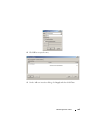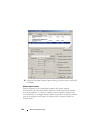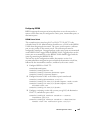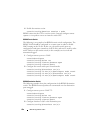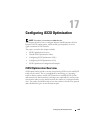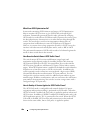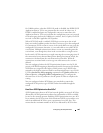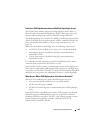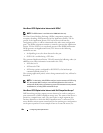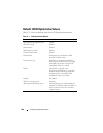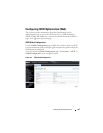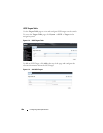
Configuring iSCSI Optimization 461
On N4000 switches, when the iSCSI CoS mode is disabled, the DCBX iSCSI
Application Priority TLV is not generated by the switch. In either case, if
DCBX is enabled and ports are configured as auto-up or auto-down, the
Application Priority TLVs received from the configuration source are proxied
to the other ports and, on the N4000 series switches, the CoS policy for iSCSI
received via DCBX is applied to iSCSI packets.
When iSCSI CoS mode is enabled, iSCSI login sessions up to the switch
limits are tracked, and data packets for those sessions are given the configured
CoS treatment. iSCSI sessions in excess of the switch limits are not given the
configured CoS treament; therefore, it is not advisable to exceed the iSCSI
session limit. Multiple connections within a session are counted against the
session limit, even though they show in the session table as a single session.
In the switch, iSCSI connections are aged out using the session aging timer. If
the connection has no detected data packets during the timeout period, the
connection is deleted from the switch internal session table. When all
connections associated with a session age out or disconnect, the session is
deleted.
You can configure whether the iSCSI optimization feature uses the VLAN
priority or IP DSCP mapping to determine the traffic class queue. By default,
iSCSI flows are assigned to the highest VLAN priority tag or DSCP value
mapped to the highest queue not used for stack management or voice VLAN.
Use the classofservice dot1p-mapping command or the Quality of Service →
Class of Service → Mapping Table Configuration page to configure the
relevant Class of Service parameters for the queue in order to complete the
setting.
You can configure whether iSCSI frames are remarked to contain the
configured VLAN priority tag or IP DSCP when forwarded through the
switch.
How Does iSCSI Optimization Use ACLs?
iSCSI Optimization borrows ACL lists from the global system pool. ACL lists
allocated by iSCSI Optimization reduce the total number of ACLs available
for use by the network operator. Enabling iSCSI Optimization uses one ACL
list to monitor for iSCSI sessions. Each monitored iSCSI session utilizes two
rules from additional ACL lists up to a maximum of two ACL lists. This
means that the maximum number of ACL lists allocated by iSCSI is three.



